How Cisco Built A Multi-Billion Dollar Enterprise Agreement SaaS Portfolio
<em>Meet Phil Vella, the Man Responsible for Cisco’s Software-Driven Transformation and creator of its Multi-Billion Dollar EA Portfolio</em>

Cisco (NASDAQ: CSCO) has evolved into a powerhouse in the software industry through innovation and a large number of acquisitions providing cutting-edge technology that empowers businesses to accelerate their digital agility, provide end-to-end security, and execute in a cloud-first world. The company is also known for Cisco Enterprise Agreement (EA) 2.0, a first-of-its-kind cross-architecture EA. With tens of thousands of customers around the globe, Cisco’s innovative software EA approach and customer-first focus resulted in more than $5B in sales in FY21.
As successful as Cisco has become in its software division, there was a time when software was an afterthought to its routers, switches, and other hardware. L
eadership shared concerns, feedback, and a desire to take the company on a transformation journey to become a software-driven company. In order to get there, the company needed to develop an executable strategy and, more importantly, identify the right talent to innovate, structure, and incubate the newly-defined capabilities.
Every story ties back to its key characters, and in the case of Cisco’s EA transformation, there’s Phil Vella. Phil has always had a passion for breaking down things that are complex with a proven track record in developing, leading, and executing strategic transformation. After joining Cisco via the Webex acquisition in March 2007, Phil quickly became Cisco’s #1 sales representative globally and was recognized with the Chairman’s Club Award four times, a company record. He was inducted into Cisco’s Sales Hall of Fame in 2012 and catapulted from a Sales Specialist to Director by turning around declining markets in small business, mid-market, and enterprise market segments.
We sat down with Phil to talk about his success as one of Cisco’s top transformation leaders and how he was able to transform Cisco’s $40 million EA business into the $5 billion powerhouse that it is today.
<strong>Let’s start from the beginning. How did you define a strategy for implementing and scaling a change like this in such a short amount of time? </strong>
“When I inherited responsibility for Cisco’s EA sales, we offered a single architecture that was experiencing negative y/y growth,” Phil begins. “We needed to understand why we weren’t selling enterprise agreements and what specific features were needed to hyper-scale across the globe.” In talking with customers, he determined they needed a stronger EA that offered more value, reduced complexity, and easier management of software licensing.
Once he created a vision for a next-generation EA that met their needs, he worked hand-in-hand with financing, engineering, and sales to build a bulletproof offer for scale. Within four months, he had a proof of concept for EA 2.0, which brought predictable revenue, increased cross-architecture selling, higher earnings per share, and an increase in Cisco’s price-to-earnings multiplier. In addition, the new solution offered built-in growth, flexibility across all of Cisco’s architectures and technology, and fixed pricing, an industry-first “true forward.”
To build and scale the new EA, Phil had to create and grow a brand-new overlay software specialist organization that would sell EAs and Cisco software globally. “In just under a year, we scaled the software specialist team to about 200 people, including appointed architecture EA leaders, who each focused on one pillar within the new EA,” he shared. “This was an incredible scale considering I started this journey as employee number one.”
<strong>As a sales leader, how did you focus on evolving the sales model to align with the transformation? </strong>
“It all came down to one simple rule: that compensation drives behavior,” Phil explained. “We offered higher incentives to reps that sold EAs and other products our team was launching. We had to put the wood behind the arrow. We had to show some sort of incremental gain.”
Rather than being a point-of-sale type of vendor, the EA sales team became more of a strategic partner and trusted advisor, and their approach to selling software, licenses, and enterprise agreements has become more mature.
<strong>With the sales team on board, the challenge becomes the customers. How did you change their minds to perceive Cisco as a software-driven company?</strong>
In the end, this shift helped Cisco provide better value and service to their customers. When it came time for customers to renew their contracts, it was harder for Cisco’s products to be ripped out of the customer’s organization. “The EA created that stickiness,” Phil stated. Plus, by renewing with Cisco, the customer could focus and reappropriate resources elsewhere instead of being distracted by the problem of managing licenses.
One of the benefits for Cisco, Phil believes, is their increased understanding of software as a service (SaaS). “The acquisitions that Cisco is making are increasingly software-SaaS and recurring revenue-centric than the hardware acquisitions they made in years past,” he explains.
With these changes, Cisco now has products and services that can be easily scaled within the organization. “The company can now do $100-million software deals,” Phil said. “This alone has transformed the company and means that its valuation is continuing to rise.”
Cisco is continuing to build on the foundation Phil and his team built. At their virtual Investor Day in September 2021, company leaders forecasted that, by 2025, about half of its revenue will come from software and other recurring sales, totaling nearly $30 billion.
<strong>What is your advice for other companies looking to make a similar transition?</strong>
“The most impactful thing a company can do right now is to talk to customers,” he shared. “Ask what their pain points are, where they need more support, and what you can do today and in the future to help their business run more smoothly. Once you have that knowledge, you can create a strategic approach to bring that to life.”
<strong>What are three pieces of advice for other leaders engaged in hyper-scale transformation with high-sustainable growth?</strong>
There’s no hesitation when Phil responds, “It’s all about the people. The team was by far the most important part of the strategy and execution, and it’s important to be the leader people believe in, trust, and want to follow.” He continues, “Hire the people that will be there for the entire journey, committed to finishing the race and taking the picture at the finish line with you.”
“Second,” he adds, “make sure you have the people that will be there the next morning, ready to climb the next mountain as soon as they wake up.”
“Lastly,” he says, “strive to be the leader that your team is ready to commit to in a high-speed journey. In my opinion, the key to success in business is reminding every employee that the company can only realize its vision when we, as leaders, are selfless and pour ourselves into everything we do. That is when incredible things happen for everyone.”
